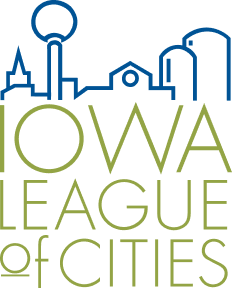The Road Use Tax Fund (RUTF) is state-shared revenue created in 1949 by the legislature to assist state, county and city governments with the construction, repair and maintenance of Iowa’s road infrastructure. The legislature sets the fuel tax rate which contributes to the RUTF. The rate was increased by 10 cents through action taken during the 2015 legislative session (resulting in a rate of 31 cents per gallon of gasoline and 32.5 cents per gallon of diesel). In addition to the fuel tax rate, several vehicle registration and other related fees contribute to the RUTF.
Road Use Tax Fund Distribution
The RUTF is disbursed into the primary road fund, secondary road fund, city street fund and farm-to-market road fund according to the following percentages:
- Primary road fund – 47.5 percent
- Secondary road fund – 24.5 percent
- City street fund – 20 percent
- Farm-to-market fund – 8 percent
The RUTF also provides revenue for several other road-related programs such as the Revitalize Iowa’s Sound Economy (RISE) fund (established in 1985) and the Transportation Investment Moves the Economy in the 21st Century (TIME-21) fund (established in 2007). Legislators established the TIME-21 fund to provide additional revenues for growing road infrastructure costs. TIME-21 is funded by many of the same sources that contribute to the RUTF, but at a much smaller level. Also, TIME-21 has a different allocation plan, as 60 percent goes to the primary road fund while the secondary road fund and the city street fund each get 20 percent. The TIME-21 revenues are added to each entity’s RUTF disbursement. Cities can view RUTF distributions in a database provided by the the Iowa Treasurer of State.
Impact of Census Results
The RUTF distribution is on a per capita basis for each city. Any changes in a city’s official population will have an impact on their RUTF distribution. Nearly all cities will have a new population figure after an official census count is done, whether it be after the 10-year census or after a requested special census. Cities need to re-calculate their RUTF distribution after receiving their new population number. The allocation of the RUTF is based on current law. Any changes in the law could result in changes to the per capita distribution. Cities are allowed to conduct one special census every decade; any population changes as a result of a special census will affect the city’s RUTF distribution at the beginning of the following calendar year.
Farm-to-Market Roads
Since 2004, cities with populations fewer than 500 have transferred the jurisdiction of their farm-to-market roads (and the corresponding road use tax money) to their county. Many cities have entered into 28E agreements with the county to return all or a portion of the responsibility for the roads back to the city, along with the RUTF. If a city’s population drops below 500 after its Census results are certified, they will transfer responsibility of their farm-to-market roads to the county on July 1 next year. A city that previously was below 500 in population and increases its population to more than 750 after a Census count will assume responsibility of farm-to-market roads in the city beginning July 1. FY 2022 RUTF estimates are available for cities less than 500 in population.
Using Estimates
The Iowa Department of Transportation (IDOT) provides periodic estimated distribution rates which is subject to changes throughout the year. The makeup of the RUTF creates a funding volatility that can be significantly dependent on consumer activity. Therefore, city officials are encouraged to use conservative estimates when projecting road use tax revenues. The Department of Revenue automatically deposits each city’s monthly share of the revenue into the bank account designated by the city. City officials should frequently review their disbursement for any fluxuations.
Allowed Uses of Funds
Code of Iowa Section 312.6 states that funds received by cities from the RUTF shall be used for, “any purpose relating to the construction, maintenance and supervision of the public streets.” Cities are allowed to use the revenues on any road-related expense, including employee wages for those who perform work on the city’s streets. Cities must budget for the road use tax on the city budget form. These revenues and expenses must be shown in the Special Revenues Fund. Section 312.14 requires each city receiving RUTF to submit the Street Finance Report to the IDOT on an annual basis. The report details all of the city’s road-related revenues and expenses (including RUTF) and must be filed by September 30.






